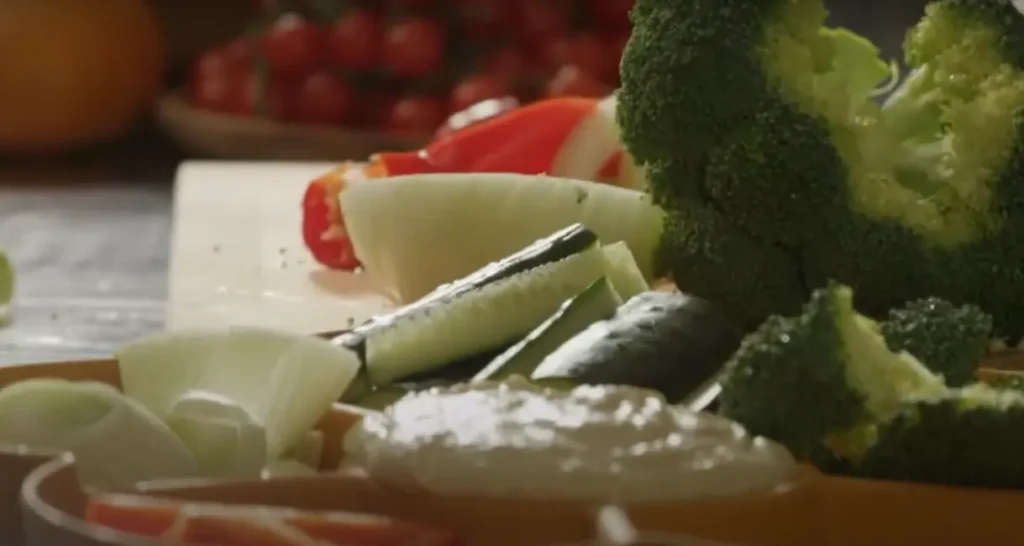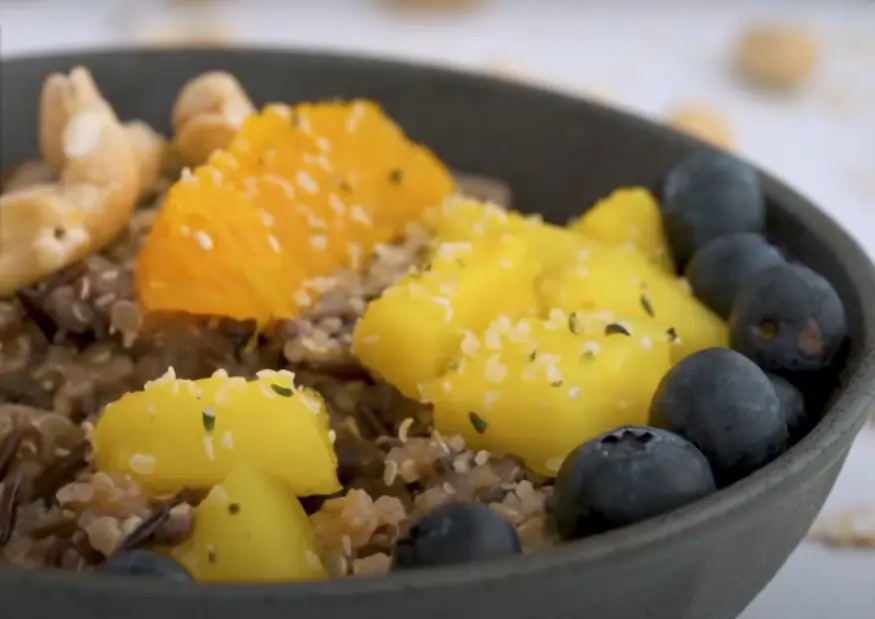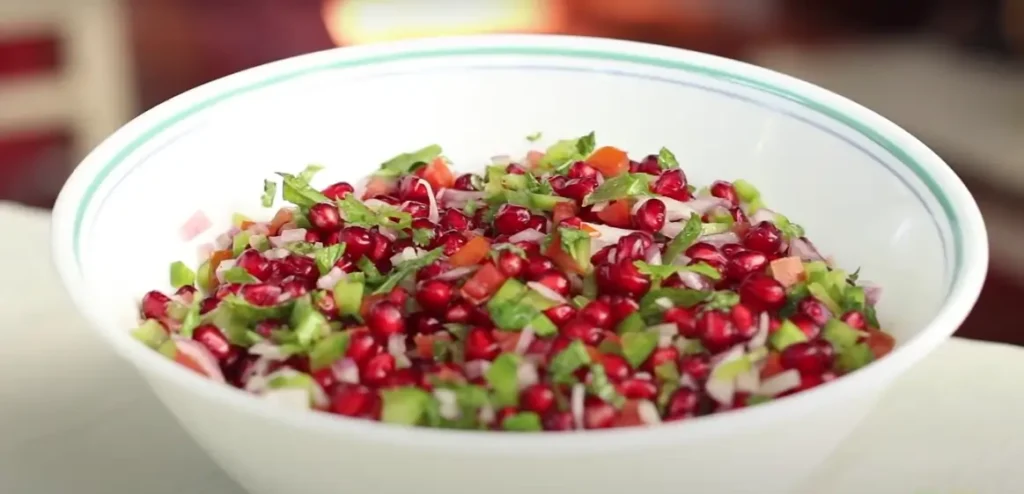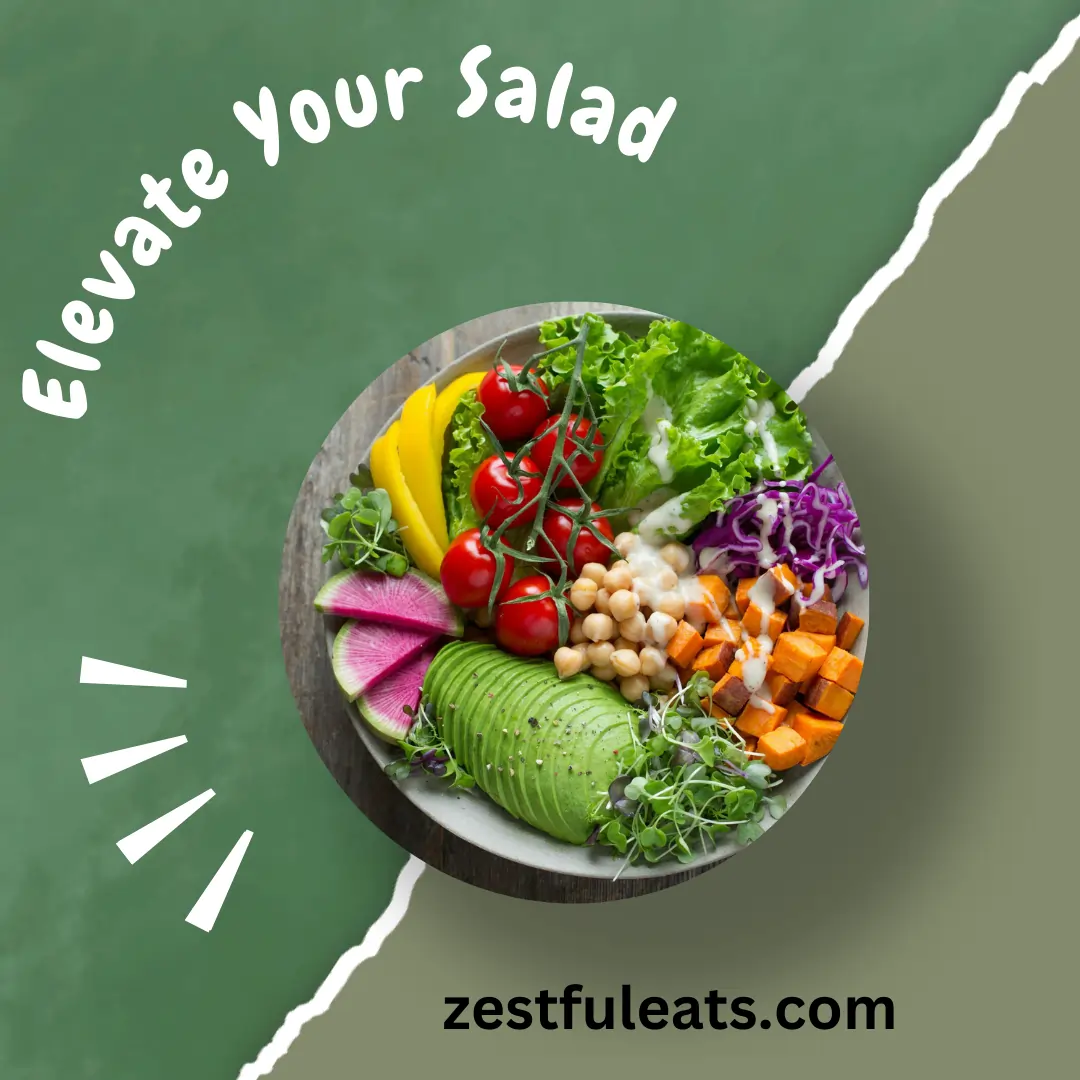Salads are typically made by combining lettuce or mixed greens with various toppings and dressing. With a wide range of possible mix-ins, salads can be a key part of a balanced diet. You can add almost any food to a salad, but some toppings offer more nutritional value than others. Elevate Your Salad with different texture.Here are some of the best salad toppings:
1Chopped Raw Vegetable for Elevate Your Salad:
Adding chopped carrots, onions, cucumbers, celery, mushrooms, and broccoli provides extra fiber and plant compounds that offer numerous health benefits.
A study involving 422 young adults revealed that consuming raw vegetables such as carrots, lettuce, spinach, and cucumbers was linked to improved mental health and mood. Including these toppings not only boosts the nutritional content but also adds various textures and flavors to your salad, making it a healthier and more satisfying meal.2 Nuts and Seeds for Elevate Your Salad:
Adding nuts and seeds—such as pistachios, walnuts, pumpkin seeds, almonds, peanuts, and chia seeds—provides a nutritious boost to your salad. For instance, 1 ounce (28 grams) of pumpkin seeds contains 5 grams of protein and nearly 20% of the Daily Value (DV) for zinc. Similarly, adding 22 almonds (1 ounce or 28 grams) delivers over 3 grams of fiber and various essential vitamins and minerals. When selecting nuts or seeds for your salad, opt for raw or dry-roasted varieties without added salt, sugar, or preservatives. These toppings not only improve the nutritional content but also add diverse textures and flavors to your salad, making it a more enjoyable and healthful meal.3 Dried fruit for Elevate Your Salad:
Adding dried fruit to salads creates a delightful combination of flavors. Dried cranberries, apricots, mango, or raisins can introduce natural sweetness and valuable nutrients. For instance, 1 ounce (28 grams) of dried apricots provides 20% of the DV for vitamin A and 2 grams of fiber. To ensure the best quality, select dried fruits that list only the fruit as an ingredient and use them sparingly. You can also make your own dried fruit by slicing your favorite fruit into thin pieces and baking them on a lined baking sheet at 250°F (121°C) for two to three hours. By incorporating these toppings, you can enhance the nutritional content, texture, and flavor of your salad, making it both a healthy and enjoyable meal.4 Whole Grains for Elevate Your Salad:
Incorporating whole grains such as cooked brown rice, quinoa, farro, and barley adds both texture and flavor to your salad. These grains are rich in fiber and protein, which help you feel full and satisfied. For instance, 1 cup (195 grams) of brown rice provides 5 grams of protein and over 3 grams of fiber. Research indicates that consuming whole grains is linked to numerous health benefits, including weight loss and reduced cholesterol levels.
Preparation Tips
Cooked whole grains are readily available at most grocery stores. To prepare your own, combine uncooked grains with water in a 1-to-2 ratio (e.g., 1 cup of grains with 2 cups of water). Bring to a boil, then simmer until the grains are tender.5 Beans and Legumes for Elevate Your Salad:
Beans and legumes are outstanding sources of plant protein to include in your salad. For example, a 1-cup (172-gram) serving of cooked black beans or kidney beans offers over 15 grams of protein, along with essential vitamins, minerals, and fiber. You can use canned beans for convenience or prepare them yourself. To cook dried beans, place them in a large pot and cover with an inch of water. Bring to a boil, then simmer for one to three hours until tender.By incorporating beans and legumes , you can boost the nutritional content and satisfaction of your salad, making it a more balanced and healthy meal.6 Fresh Fruit for Elevate Your Salad:
Although salads are usually composed of vegetables, adding fresh fruit can provide both delicious flavors and health benefits. Research involving over 800 adults found that consuming just one piece of fruit per day is linked to a 10% reduction in heart disease risk. Popular fresh fruits to include in your salad are berries, apples, oranges, and cherries. Additionally, you can use blended fruit or freshly squeezed fruit juice to create homemade salad dressings. Incorporating fresh fruit as a topping can boost the nutritional content, flavor, and appeal of your salad, making it a delightful and healthy meal option.7 Baked Tortilla or Pita chips for Elevate Your Salad:
Adding crushed tortilla chips or pita chips introduces a delightful crunch and flavor to your salad. Tortilla chips are perfect for Tex-Mex salads featuring beans, salsa, avocado, and shredded cheese. Meanwhile, pita chips pair well with Mediterranean salads. For a healthier option, choose baked corn tortilla chips or whole-grain pita chips that are low in sodium and added sugar. A serving of packaged whole-wheat pita chips (about 11 chips or 28 grams) provides roughly 3 grams of fiber and 4 grams of protein. To make homemade baked chips, slice tortillas or pitas into triangles, brush with olive oil, and bake at 350°F (176°C) for 10–15 minutes.Incorporating baked tortilla or pita chips as a topping can enhance the texture, flavor, and nutritional content of your salad, making it a more enjoyable and balanced meal.8 shredded hard cheeses for Elevate Your Salad:
Adding shredded hard cheeses such as cheddar, gouda, parmesan, introduces rich flavor and essential nutrients to your salad. For instance, one ounce (28 grams) of shredded parmesan cheese contains over 10 grams of protein and around 100 calories. It also provides 35% of the Daily Value (DV) for calcium, a key nutrient for bone health, blood clotting, and proper muscle function. You can easily find packaged shredded cheeses or blocks of hard cheese that can be shredded using a hand grater.Including shredded hard cheeses as a topping not only enhances the taste and texture of your salad but also boosts its nutritional profile, making it a satisfying and healthy meal option.Roasted vegetables for Elevate Your Salad:
Adding roasted vegetables to your salad provides a delightful contrast to the raw greens. Roasting brings out unique flavors and textures in vegetables and research shows that cooking vegetables can improve digestion and nutrient absorption. To prepare roasted vegetables, dice your chosen veggies, toss them in olive oil and seasonings, and bake on a lined baking sheet for 30–40 minutes at 350°F (176°C). You can also use leftover roasted veggies from previous meals as a convenient salad topping.Including roasted vegetables as a topping enhances the flavor, texture, and nutritional content of your salad, making it a more satisfying and healthy meal.10 Hard-boiled eggs for Elevate Your Salad:
Hard-boiled eggs are a highly nutritious addition to your salad. One large egg provides 6 grams of protein and more than 15 vitamins and minerals with just 77 calories. The high protein content can help you feel fuller for longer. A study of 30 overweight or obese women found that those who ate eggs consumed significantly fewer calories over the next 36 hours compared to those who ate bagels. To prepare hard-boiled eggs, place them in a saucepan and cover with an inch (2.5 cm) of water. Bring to a boil for about 10 minutes, then remove from heat and transfer the eggs to a bowl of cool water for five minutes before peeling.Including hard-boiled eggs as a salad topping boosts the nutritional content, flavor, and satiating quality of your meal, making it a healthier and more satisfying option.11. Fresh Herbs for Elevate Your Salad:
Fresh herbs such as basil, mint, rosemary, parsley, sage, and cilantro can elevate the flavor and fragrance of your salads and dressings. These herbs not only enhance taste but also offer various health benefits. For instance, research indicates that compounds in rosemary and sage may possess anticancer properties, while cilantro may help combat inflammation.Incorporating fresh herbs as a topping adds depth of flavor and potential health benefits, making your salad a more flavorful and nutritious meal.12. Leftover Meat for Elevate Your Salad:
Using leftover meat such as baked or grilled chicken, pork, or beef can make your salad more satisfying and nutritious. These meats are rich in vitamins, minerals, and high-quality protein, which help you feel full and satisfied. For example, 3 ounces (84 grams) of baked chicken breast provides 26 grams of protein with fewer than 140 calories. You can find pre-cooked meats at grocery stores for a quick and convenient option, but be mindful of additional and potentially unhealthy ingredients. To prepare your own, cook meats in a skillet, on the grill, or in the oven with olive oil and seasonings at 350°F (176°C) until they reach a safe internal temperature.Incorporating leftover meat as a salad topping enhances the nutritional content, flavor, and satiating quality of your meal, making it a healthier and more satisfying option.13. Seafood for Elevate Your Salad:
Adding seafood to your salad can boost its nutrition and flavor. Salmon, cod, halibut, shrimp, lobster and even sardines are incredibly healthy sources of protein, omega-3 fatty acids, vitamins and minerals. Studies show that eating fish can boost heart health and brain function .The most nutritious ways to prepare seafood for salads are baking, broiling or grilling. Deep-fried or breaded seafood with added oils and salt are not as healthy.
To prepare fish at home, brush the fillets with olive oil and seasonings and bake in a lined dish for 15–20 minutes at 400°F (204°C).14. Avocados for Elevate Your Salad:
Avocados are a versatile and nutrient-rich addition to salads. They are packed with monounsaturated fats, fiber, potassium, vitamin C, vitamin K, and folate, all of which contribute to heart health and healthy aging. A single avocado provides over 50% of the Daily Value (DV) for vitamin K and 41% of the DV for folate. You can easily incorporate sliced avocado into nearly any salad or use guacamole as a topping. To make guacamole, mash the avocado with onion, garlic, and lime juice. Adding fresh cilantro can give it an extra burst of flavor.Including avocados as a salad topping enhances the nutritional content and taste of your meal, making it both delicious and beneficial for your health.15. Soft Cheeses for Elevate Your Salad:
Soft cheeses such as fresh mozzarella, feta, ricotta, goat cheese, bleu cheese, and burrata make excellent salad toppings. They add a creamy texture and rich flavor while providing protein, calcium, and other essential micronutrients. Soft goat and feta cheeses made from goat’s or sheep’s milk are also lactose-free, making them suitable for those who cannot tolerate cow’s milk. These cheeses are readily available at grocery stores and specialty markets. When purchasing mozzarella, burrata, or feta, look for varieties packed in brine, which helps inhibit bacterial growth and maintain the creamy texture.Incorporating soft cheeses as a salad topping enhances the nutritional content and taste, making your meal both delicious and nutritious.16. Pomegranate Arils for Elevate Your Salad:
The red seeds of pomegranates, known as arils, are a decorative and nutritious salad topping. Not only do they add visual appeal, but they also offer impressive health benefits. Pomegranate arils are rich in compounds called anthocyanins, which have antioxidant properties. Packaged pomegranate arils are available at most grocery stores. To extract arils from a whole pomegranate, slice off the top, make a few evenly spaced scores on the sides with a knife, and then crack it open with your hands.
Including pomegranate arils as a salad topping enhances both the nutritional content and the aesthetic appeal of your salad, making it a healthy and visually pleasing meal.17. Corn and Salsa for Elevate Your Salad:
Adding corn and salsa to your salad is an easy way to create a flavorful and nutritious Tex-Mex salad. A 1/2-cup (128-gram) serving of corn kernels provides over 9% of the Daily Value (DV) for fiber and is rich in vitamin C and folate. Research also suggests that eating tomato-based products like salsa, which contain lycopene, may help prevent heart disease and cancer. When shopping for corn and salsa, choose varieties with mostly whole-food ingredients. Alternatively, you can make homemade salsa using diced tomatoes, peppers, onions, cilantro, and seasonings.Incorporating corn and salsa as salad toppings enhances the nutritional content, flavor, and texture of your salad, making it a delicious and healthy meal option.18. Tofu and Edamame for Elevate Your Salad:
Tofu and edamame (soybeans) are excellent sources of plant protein to include in your salad. One cup (155 grams) of cooked edamame contains nearly 17 grams of protein, while 1/2 cup (126 grams) of tofu provides about 20 grams. Both are rich in folate, vitamin K, and various other micronutrients. Research suggests that consuming tofu, edamame, and other soy-based foods may help prevent heart disease and certain types of cancer. When selecting soy foods for your salad, choose whole soybeans and tofu with minimal additives. Note that most soy products are genetically modified unless labeled as organic or GMO-free.
Incorporating tofu and edamame as salad toppings boosts the nutritional content, protein, and health benefits of your meal, making it a delicious and nutritious option.19. Olives for Elevate Your Salad:
Olives are a nutrient-rich and flavorful addition to any salad. They are high in healthy fats, providing over 2 grams of monounsaturated fat per ounce (28 grams). Consuming monounsaturated fats has been linked to a reduced risk of heart disease and lower cholesterol levels. Since olives are typically cured in brine, they can be high in sodium. If you are watching your salt intake, opt for varieties with reduced sodium.Including olives as a salad topping enhances the nutritional content, flavor, and health benefits of your meal, making it a delicious and heart-healthy option..20. Oil-and-Vinegar Dressings for Elevate Your Salad:
No salad is complete without a good dressing. Oil-and-vinegar dressings are a healthy and flavorful choice. A study found that participants who consumed salads with full-fat dressings absorbed more nutrients from the vegetables compared to those who used reduced-fat or non-fat dressings. To make a nutritious, full-fat dressing, combine 2 tablespoons (30 ml) of healthy oils such as olive oil or avocado oil with 1 tablespoon (15 ml) of vinegar. This simple mix creates a tasty and nutrient-rich dressing. Enhance the flavor by adding your favorite herbs and spices.Using an oil-and-vinegar dressing not only adds flavor to your salad but also helps you absorb more nutrients, making your meal both delicious and beneficial for your health.The Bottom Line
Enhancing your salad with healthy toppings can significantly boost both its nutrition and flavor. The suggestions above provide an easy way to create a nutritious mix that helps you feel fuller and more satisfied. These nutritious toppings not only add flavor and texture to your salad but also contribute to a balanced diet and offer a range of health benefits.FAQS
1 What are 5 components of a satisfying salad?
5 Steps to a More Satisfying Salad
- Use fresh ingredients: Ensure all vegetables, fruits, and herbs are fresh for the best flavor and nutritional value.
- Add different textures: Combine crunchy, creamy, and chewy elements to create an interesting and enjoyable eating experience.
- Create balanced flavors: Mix sweet, salty, tangy, and savory ingredients for a well-rounded and delicious taste.
- Skip the greens: Incorporate grains, legumes, or roasted vegetables to add variety and depth
- .Include protein: Add grilled chicken, tofu, beans, or eggs to make the salad more filling and nutritious.
2 What are the most popular items on a salad bar?
The following are some of the more popular yet healthy choices of this famous topping:
- Lettuce.
- Spinach.
- Kale.
- Arugula.
- Cucumber.
- Sweet Potatoes.
- Potatoes.
- Asparagus
3 How to keep salads interesting?
Ways to Make Your Salads More Exciting
- Start with what’s in season: Use seasonal vegetables for the best flavor. Look beyond lettuce: Incorporate a variety of greens and vegetables. Add herbs: Fresh herbs enhance flavor and aroma. Think texture: Combine crunchy, creamy, and chewy elements. Add grains: Include grains like quinoa or faro . Add bread: Croutons or toasted bread add a satisfying crunch. Add protein: Incorporate proteins like chicken, tofu, or beans. Add nuts: Nuts provide extra crunch and nutrition.
4 What compliments a salad?
Here are seven quick additions from the pantry that always do the trick.
- Beans or Lentils.
- Leftover Rice or Grains.
- Tuna.
- A Hard- or Soft-Boiled Egg.
- Leftover Pasta.
- Bread.
- Olives.
5 How can I enjoy salad more?
- Start by chopping up all your salad ingredients into small pieces.
- Change up the greens.
- Adding cheese, fish, chicken, or grains give extra flavor and provide a more wholesome feeling meal.
- Add crunch for good texture variety.
